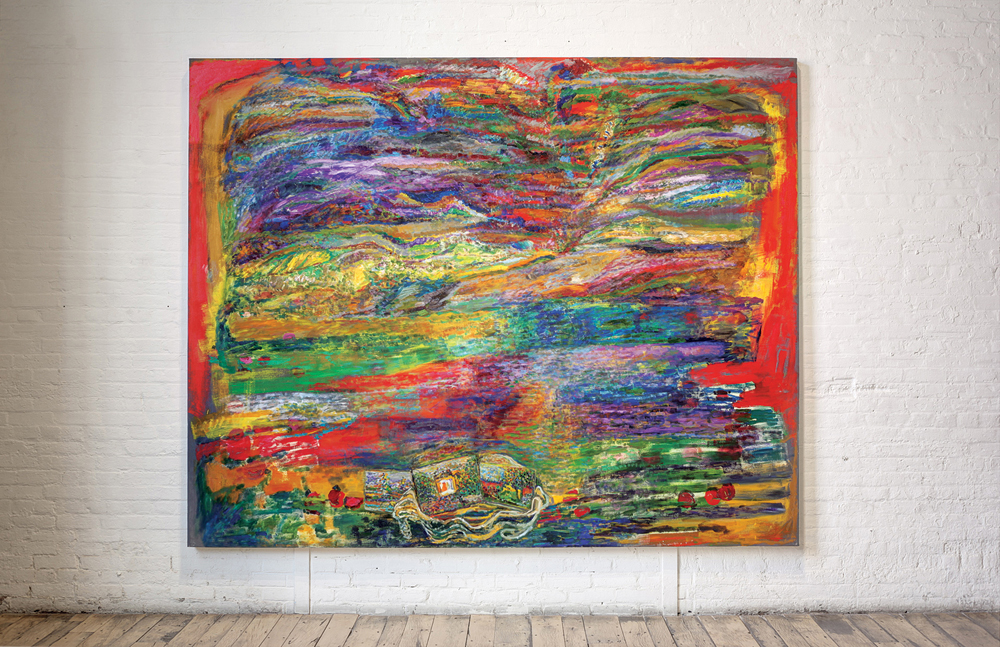This is an article from the Spring 2015 issue of Canadian Art.
Exhibitions in commercial galleries are ephemeral things. Each one survives three or four weeks, shorter than the lifespan of a honeybee. To review an exhibition is to mark the fact that it existed at all. Writing a review may be a modest labour, directed toward the public record, but it can also be a form of love. I mention this because “The Path of Appearance,” Gina Rorai’s first one-person exhibition in five years, was marked by Rorai’s deeply felt attention to mortality. Standing before one of her paintings makes you a subject before a window, its curtain drawn open, beyond which you find the inevitability of time passing. You, before a painting, in the midst of the passing show.
The most brilliant work in the exhibition, #47 (For JJR) (2014), is, in a sense, a memorial and a gift. Rorai began it by painting and remembering a tree that stood outside the window of her second-floor bedroom in the house she grew up in. Even if the tree has been painted over many times since it was first brushed onto the canvas, its presence is clearly visible. It pulls you effortlessly into recognition. When the branches of the tree are not lost to the horizontal of the blue-and-purple sky, they form a kind of scaffolding, a structure for this sky. They belong equally to the past and to the present, and just as one finds a kind of equilibrium in the form of a tree, here, the equilibrium has to do with the relentless play of time and the potency of suspending that time.
The dance of the tree throughout this painting suggests Mondrian’s The Grey Tree (1911) and his Flowering Appletree (1912). In #47 (For JJR), several quickly brushed apples have fallen in the foreground. Others hover as pentimenti closer to the middle of the canvas where they must have once belonged to the lower branches of the tree. Some of these lower branches have become lines that alternately define and give way to the contours of a far mountain range. This is a mountain range that one finds in a fable. Beneath the mountains, fields give way to a shimmering surface that radiates complexity and multiplicity, suggesting the depths of a body of water while acknowledging a debt to the surface of the canvas.
In the foreground is a luminous, pearlescent form like a large, open seashell. It could be a Neo-Grec prop at the front of a bygone theatre set, or a domestic object. If it is a domestic object, we know it must be treasured because it appears to be a living thing. Its fluid lines have something of the lively tension of a skein of yarn unravelling. Like a basket, it cradles two small landscape paintings. These paintings are gifts within the gift of the entire work. The work #47 (For JJR) reflects the layered subjectivity of remembered time and place. And, as much as time recollected, we are offered, like the keepsake paintings in the foreground of the picture, time collected as a process of painting.

 Gina Rorai, #47 (For JJR), 2014.
Gina Rorai, #47 (For JJR), 2014.







